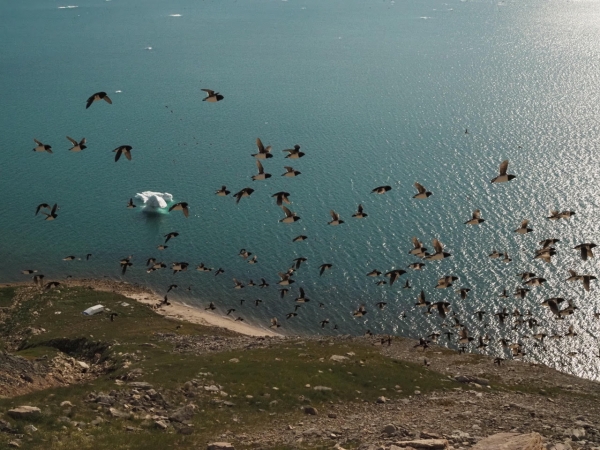Acoustic recordings of a colony of little auks reveal their nocturnal activities and offer valuable monitoring means for avian biology in the Arctic.
Acoustic recordings of a colony of little auks reveal their nocturnal activities and offer valuable monitoring means for avian biology in the Arctic.
A collaborative study conducted by researchers from the Arctic Research Center at Hokkaido University and the Department of Ecoscience at Aarhus University, Denmark, delves into the captivating activities of the most abundant seabird in the North Atlantic (little auk, Alle alle). The study sheds light on birds’ daily rhythmic behavior under the endless daylight of the Arctic summer. Led by Associate Professor Evgeny A. Podolskiy, Hokkaido University, the findings were published in the journal Communications Biology.
In the remote wilderness of Northwest Greenland, the research team employed passive acoustic and imaging technologies to uncover the hidden rhythms of little auk colonies. Every summer, approximately 60 million birds come to this region to breed and forage, and while their vocalization is a familiar summer soundscape for the local inhabitants, little is known to science about their daily routines and calling habits. The study revealed a “nocturnal” surge in vocalization activity, contrary to expectations of mid-latitude inhabitants familiar with a dawn chorus. Due to a lower number of birds in the afternoon, the calling and wing-flapping rates decreased. The study improves our understanding of avian behavior in continuous daylight environments.
Read more at Hokkaido University
Image: Little auks flying over the colony (Siorapaluk, Greenland, 2022; Photo Credit: Monica Ogawa).




